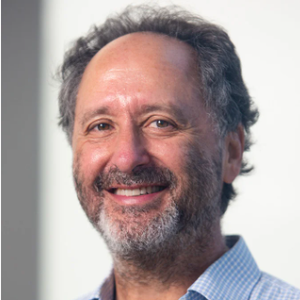
Prof Barry Sanders
University of CalgaryBarry Sanders is the Scientific Director of Calgary’s “Quantum City”, hosted by the University of Calgary and tasked with building a strong quantum ecosystem in Alberta. Barry was awarded two Diplomas of Imperial College in 1985 and 1987 and a Doctor of Philosophy in 1988 from the University of London plus a Doctor of Science from Imperial College London in 2018 in recognition of career achievement in quantum optics and quantum information. His postdoctoral positions were in Australia and New Zealand, and he was a professor at Macquarie University Sydney for 12 years before moving back to his Alma Mater University of Calgary in 2003. Barry’s theoretical research includes quantum sensing and metrology, quantum and quantum-resilient communication, quantum computing and quantum optics. He has held numerous distinguished international visiting professorships and affiliations in Canada, the USA, China, India, Israel, Austria and elsewhere, and is a Scientist with the Creative Destruction Lab sites at the Universities of Toronto and Calgary. Sanders has served as an Expert with the Canadian Council of Academies, is Chair of the Board for Deep Tech Canada, an affiliate of the Perimeter Institute for Theoretical Physics in Waterloo, Canada, and is a member of the Scientific Board for the Banff International Research Station. He is on the advisory boards for CERN’s Open Quantum Institute and for the Google XPrize in quantum computing. Sanders is co-lead of the International Research Network: Canada-France Quantum Alliance involving France’s Centre National de la Recherche Scientifique. Barry serves on expert panels in Canada, the USA and both the European Commission and countries in Europe. He is a Fellow of the Royal Society of Canada, of the United Kingdom Institute of Physics, of the American Physical Society, and of Optica, and he received the City of Calgary International Achievement Award in 2022.
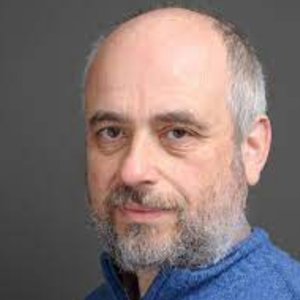
Prof Dmitry Budker
University of California, BerkeleyDmitry Budker received his Ph.D. in physics from UC Berkeley in 1993 and was a postdoctoral researcher at the University until his faculty appointment in 1995. Born in the former USSR, Budker was a student at the Novosibirsk State University from 1980 until 1985, when he received an equivalent to MS with honors from the Department of Physics. He then served as a junior researcher at the Institute of Nuclear Physics, where he conducted research on laser spectroscopy of atoms. In 1994, Budker received the American Physical Society Award for Outstanding Doctoral Thesis Research in Atomic, Molecular, and Optical Physics. He is a recipient of the NSF CAREER award, a Fellow of the American Physical Society, and was a Miller Professor in 2003-2004.
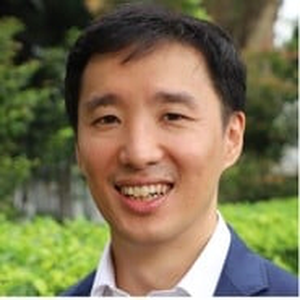
Associate Professor Alexander Ling
Principal Investigator at Centre for Quantum TechnologiesProfessor Alexander Ling is a principal investigator at the Centre for Quantum Technologies, and a member of the Department of Physics at the National University of Singapore. He was previously Chief Scientific Officer for the National Quantum Office, and Director of the Quantum Engineering Programme. In 2024, he was named as a Distinguished International Associate of the UK Royal Academy of Engineering. His research interests are in global quantum networks enabled with repeaters and memories.
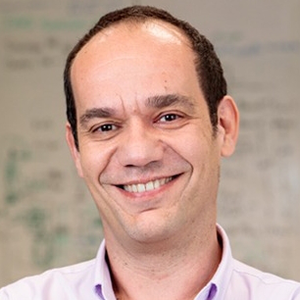
Associate Professor David Wilkowski
Principal Investigator at Centre for Quantum TechnologiesDavid Wilkowski is an associate professor at the Nanyang Technological University in Singapore and Université Côte d'Azur in France. He is a principal investigator at the Centre for Quantum Technologies, at the Centre for Disruptive Photonic Technologies, and at Majulab (CNRS IRL 3654). His research interests range from quantum simulation and computing, quantum sensing, coherent transport to nanophotonics and plasmonics. He is mainly working with ultracold gas systems.
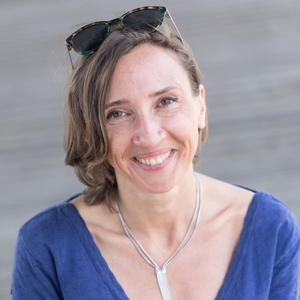
Dr Alexia Auffèves
Director of MajuLabAlexia Auffèves is a First Class Research Director (DR1) at CNRS. She runs the CNRS International Research Lab MajuLab and leads the Singaporean node of the Quantum Energy Team.
After an experimental PhD under the supervision of Prof. S. Haroche, she is recruited at CNRS in 2005 in Grenoble where she develops a research line around the theory of quantum optics and quantum thermodynamics. She promotes the physics-philosophy interface within the Grenoble centre for quantum science and technologies now known as QuantAlps, which she runs between 2017 and 2022. In 2022, she launches the Quantum Energy Initiative (QEI), an interdisciplinary and international research community to understand the energetic footprint of emerging quantum technologies.
Her fields of interest are quantum energetics, quantum optics, and quantum foundations.

Associate Professor Rainer Dumke
Principal Investigator at Centre for Quantum TechnologiesRainer Dumke is a physicist and faculty member at Nanyang Technological University (NTU) in Singapore, where he has been since 2006. He is also a Principal Investigator at the Centre for Quantum Technologies. Dumke's research focuses on quantum circuits and sensors, exploring the hybridization of atomic and superconducting technologies for quantum computing applications.
His work encompasses a wide range of quantum physics applications, including the development of ultra-precise atomic magnetometry and portable atom interferometers for measuring local gravity. Dumke has made significant contributions to the field of atom optics with microfabricated optical elements and has studied the formation of Rydberg atoms in expanding ultracold neutral plasmas. His research also extends to superfluid qubit systems with ring-shaped optical lattices, which have potential applications in quantum information processing.
Dumke earned his PhD from Leibniz University Hanover, Germany, in 2003. He has previously worked at prestigious institutions such as the National Institute of Standards and Technology (NIST) in the USA and the Max Planck Institute for Light in Germany. His academic achievements include receiving the Feodor-Lynen Fellowship from the Humboldt Foundation in 2003.
On a lighter note, Dumke's team has demonstrated the fusion of tardigrades and superconducting qubits, pushing the boundaries of quantum physics and biology. In 2019, he received the Ig Nobel Prize in Biology for his research on the magnetic properties of cockroaches, highlighting his unique blend of serious inquiry and unconventional experiment.

Associate Professor Mile Gu
CQT Fellow at Centre for Quantum TechnologiesMile Gu is originally from New Zealand and obtained his Ph.D. at the University of Queensland. After a faculty position at the Institute for Interdisciplinary Information Sciences, Tsinghua University, he joined Nanyang Technological University in 2016. Presently, Gu is Deputy Director of the Nanyang Quantum Hub and Designated NRF Investigator for a for a $S3 Million project on Quantum-Enhanced Autonomous Agents. Gu is also Fellow of the Singapore Centre for Quantum Technologies, Principal investigator of the French-Singapore joint institute Majulab. Gu’s previous accolades include the National Research Foundation Fellow 2016, the Young China 1000 talent and winner of the 2020 IBM Quantum Pitch Contest.

Associate Professor Lin Wu
Associate Professor at Singapore University of Technology and Design (SUTD)Associate Professor Wu Lin earned her B.Eng. with First Class Honours (2005) and Ph.D. (2009) in Electrical and Electronic Engineering from Nanyang Technological University, Singapore. She was a computational scientist at the Institute of High-Performance Computing A*STAR from 2009 to 2021. She joined the Singapore University of Technology and Design as an Associate Professor in the Science, Mathematics, and Technology cluster in November 2021. Her research focuses on nanophotonics and nanoplasmonics, particularly in quantum technology and sensing applications. She has authored or co-authored two book chapters and approximately 80 refereed journal papers in journals such as Optics Express, ACS Nano, Science, Nature Communications, Nature Photonics, Advances in Optics and Photonics, Advanced Optical Materials, and Nano Letters. She also holds three U.S. patents. Currently, she serves as Chair of the IEEE Singapore Section, Nuclear and Plasma Sciences Society, Editorial Advisory Board Member for APL Quantum, and Associate Editor for Optics Express.
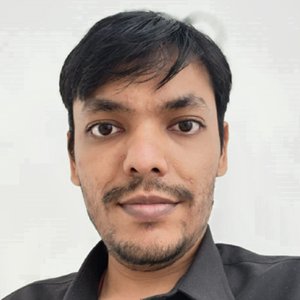
Dr Piyush Agarwal
Scientist at A*STAR - Agency for Science, Technology and ResearchPiyush is an ultrafast physicist with a keen interest in exploring spin dynamics on femtosecond timescales. His research focuses on understanding spin ordering and its potential impact on future ultrafast data-processing speeds. He contributes to the emerging field of spintronics, which operates at terahertz frequencies—three orders of magnitude higher than the gigahertz frequencies of conventional spintronics. Piyush earned his Ph.D. from Nanyang Technological University in 2023 under the guidance of Prof. Ranjan Singh, where he demonstrated the study of ultrafast carrier dynamics using terahertz emission spectroscopy. After completing Ph.D., he assumed the position of scientist at the Institute of Materials Research and Engineering. Currently, he is developing methods to harness the potential of emerging 2D materials for the generation and detection of ultrafast terahertz charge currents for application in future ultrafast hybrid spintronics-photonics devices.

Dr Apoorva Chaturvedi
Senior Research Fellow at Nanyang Technological UniversityDr Apoorva Chaturvedi received his Bachelor of Technology (B. Tech) in Materials Science and Engineering from C.S.J.M. University, Kanpur, India and received his PhD degree in 2017 from School of Materials Science and Engineering, Nanyang Technological University, Singapore. During his PhD, he carried out extensive studies on design, synthesis, characterization, and applications of layered two-dimensional materials such as transition metal dichalcogenides, etc. Currently he is working as a Senior Research Fellow in Crystal Growth Laboratory at School of Materials Science and Engineering, Nanyang Technological University, Singapore and primarily focused on designing novel synthesis protocols for different morphologies of diamond (single crystal, polycrystalline, thin film, etc.), their materials characterization and device integration.
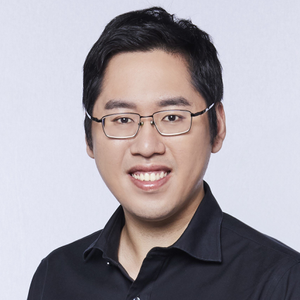
Dr Cleaven Chia
Senior Scientist at A*STAR - Agency for Science, Technology and ResearchDr Cleaven Chia graduated with a BSc in Physics with Theoretical Physics from Imperial College London in 2014, and a PhD in Applied Physics from Harvard University in 2021. During his PhD, he worked with Prof. Marko Lončar to integrate diamond optomechanical crystals and silicon vacancy centre spins, in order to couple photons and phonons to spins. He also has experience with numerical simulations of photonic and phononic crystals, nanofabrication on diamond, and fibre optical characterization. Cleaven's current research interests lie in developing hybrid quantum systems that interface photons, phonons, and spins.
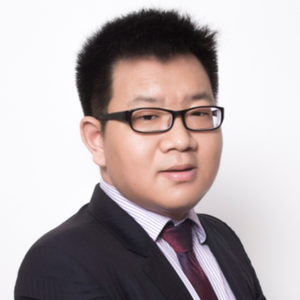
Dr Zhaogang Dong
Principal Scientist at A*STAR - Agency for Science, Technology and ResearchZhaogang Dong is a Principal Scientist & Group Leader at Institute of Materials Research and Engineering (IMRE), A*STAR. He also holds an adjunct Associate Professor position at the Department of Materials Science and Engineering (MSE), National University of Singapore (NUS). His research interests include integrated quantum photonics, miniaturized quantum light sources, sub-10-nm nanofabrication, and superconducting devices. Recently, he has received the Manufacturing, Trade & Connectivity (MTC) Individual Research Grant (IRG) Awards for both 2021 & 2022.
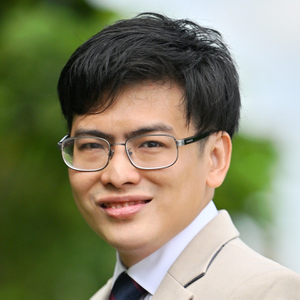
Dr Siong Thye Goh
Senior Scientist at A*STAR - Agency for Science, Technology and ResearchDr Siong Thye Goh is a senior scientist at the Institute of High Performance Computing (IHPC) under the Agency for Science, Technology and Research (A*STAR), Singapore. He is also an investigator at the A*STAR Quantum Innovation Centre (Q.Inc), and an adjunct lecturer at Singapore Management University.
Prior to joining IHPC, he was a research scientist with Singapore Management University. He works with QUBO solvers to solve optimization problems. He studies how to enhance the quality of solutions and how to improve scalability.
His current research interests include researching on complexity theory and studying the performance of variational models. He contributes to Qibo repository actively. His educational trajectory entails the conferment of a Ph.D. degree in Operations Research from the Massachusetts Institute of Technology. Additionally, he is trained in mathematics. He has received an M.Sc in Mathematics and a B.Sc in Applied Mathematics and Statistics from the National University of Singapore.
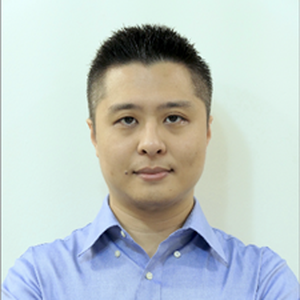
Dr Jun Yong Khoo
Senior Scientist at A*STAR - Agency for Science, Technology and ResearchKhoo Jun Yong is currently a senior research scientist at Institute of High Performance Computing (IHPC), Agency for Science, Technology and Research (A*STAR), Singapore, and an investigator at A*STAR Quantum Innovation Centre (Q.InC). His research interests include quantum optimal control, quantum machine learning, as well as applications of classical machine learning to quantum systems. He received his Ph.D. in Physics from Massachusetts Institute of Technology, M.Sc. in Physics from University of Waterloo, and B.A. Physics from University of Oxford. Prior to joining A*star, he did his post-doctoral research in Max Planck Institute for the Physics of Complex Systems in Dresden, Germany.
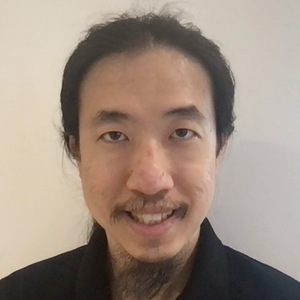
Dr Dax Koh
Senior Scientist at A*STAR - Agency for Science, Technology and ResearchDr Koh Enshan Dax is a Senior Scientist at the Institute of High Performance Computing (IHPC) under the Agency for Science, Technology and Research (A*STAR), Singapore. He is also an Investigator at the A*STAR Quantum Innovation Centre (Q.Inc), an Adjunct Assistant Professor at the Singapore University of Technology and Design (SUTD), and an Editor at the journal Quantum.
Previously, Dr Koh was a Z-Fellowship Postdoctoral Researcher at Zapata Computing (now Zapata AI) in Boston, MA, USA. He has been awarded A*STAR’s National Science Scholarship (NSS BS-PhD) and the A*STAR Science and Engineering Research Council (SERC) Central Research Fund (CRF) Award for Use-Inspired Basic Research.
Dr Koh received the B.S. degree in Mathematics and Physics from Stanford University (Stanford, CA, USA); the M.Sc. degree in Physics from the University of Waterloo (Waterloo, ON, Canada) in conjunction with the Perimeter Scholars International certificate from the Perimeter Institute for Theoretical Physics (Waterloo, ON, Canada); and the Ph.D. degree in Mathematics from the Massachusetts Institute of Technology (Cambridge, MA, USA).
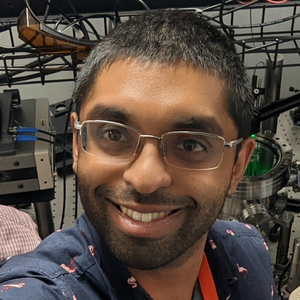
Dr Ruvi Lecamwasam
Scientist at A*STAR - Agency for Science, Technology and ResearchI'm a theorist who sometimes pretends to be an experimentalist, working in levitated quantum sensing. I'm from Canberra, Australia, where I did my PhD. Following this I spent two years in Okinawa, Japan, and am now at A*STAR after being impressed by Hawker centres while on holiday. I want to see how quantum systems can be used to study fundamental questions in physics, and build useful technologies. To this end I've become interested in levitated optomechanics, quantum information theory, and perturbative solution to dynamical systems. I'm also very passionate about education and outreach.
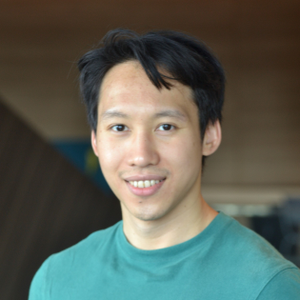
Dr Junyi Lee
Senior Scientist at A*STAR - Agency for Science, Technology and ResearchJunyi received his B.A. in physics from the University of Chicago and his Ph.D. in physics from Princeton University. During his Ph.D., he built an experiment utilizing a K-3He co-magnetometer to improve the constraints of axion-mediated anomalous spin interactions by an order of magnitude over two decades of axion mass. Since then, he has developed a non-variational entanglement sensitive state preparation algorithm that can efficiently prepare states with an order of magnitude fewer gates than other non-variational methods, developed a Monte-Carlo validated frequency-domain likelihood analysis to correctly analyze stochastic signals from low-frequency dark matter axions, and has received grants to build and develop atomic sensors in Singapore for magnetic and rotation sensing.
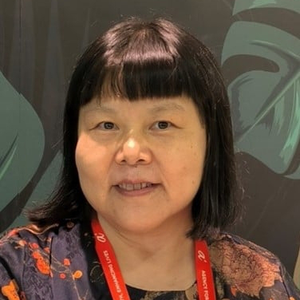
Dr Hongyu Li
Principal Scientist at A*STAR - Agency for Science, Technology and ResearchHongyu Li is a Principal Scientist at the Institute of Microelectronics (IME), Agency for Science, Technology and Research, Singapore, her current research areas are in 3D superconducting interconnect, Surface ion trap integration, and 3D Wafer to Wafer hybrid bonding. She is leading the TSV task in heterogeneous integration departments.
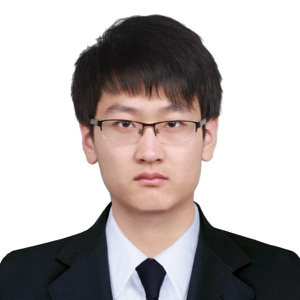
Dr Xuezhi Ma
Scientist at A*STAR - Agency for Science, Technology and ResearchDr. Xuezhi Ma is a Scientist at Q.InC, A*STAR. Before joining A*STAR in 2021, he received his Ph.D. degree in Electrical Engineering with dissertation-year fellowship from the University of California, Riverside in 2019. And then, he moved to Texas as a postdoc researcher at the Department of Mechanical Engineering in Texas A&M University for two years. His background in Physics, Electrical Engineering spans topics on near-field optics, precise instrument development, quantum materials, nano-photonics, ultrafast optics, nonlinear optics, nanofabrication, exciton for quantum information and quantum communications, and artificial intelligence. He has published more than 30 peer-reviewed papers (13 first-authored and 1 corresponding authored) on Nature Photonics, Nature Communications, Advanced Materials, and Nano Letters, delivered more than 10 international invited talk, and has one authorized US patent.
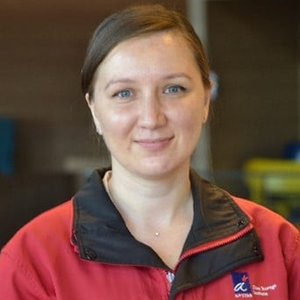
Dr Anna Paterova
Senior Scientist at A*STAR - Agency for Science, Technology and ResearchDr. Anna Paterova obtained her undergraduate degree in 2014 from Lomonosov Moscow State University, in Physics department with the topic in quantum optics and shaping the spectrum of biophotons. From 2014 to 2018 she did a joined PhD research between Data Storage Institute, one of the institutes in Agency for Science, Technology and Research (A*STAR) and Nanyang Technological University in Singapore. In 2018 she successfully defended her PhD degree in Nanyang Technological University with the topic in quantum optics and nonlinear interferometry. Since receiving her PhD, Anna has been working as a research scientist in the Institute of Materials Research and Engineering (IMRE) A*STAR, Singapore. Currently, she is a Senior Scientist in IMRE with her research group focused on working in application of the nonlinear interferometry in the problems of infrared metrology.
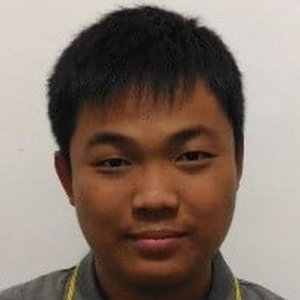
Dr Adrian Nugraha Utama
Scientist at A*STAR - Agency for Science, Technology and ResearchAdrian Nugraha Utama is a scientist working in the National Quantum Federated Foundry hosted in IMRE, Singapore. His main training was in atomic and optical physics, and he is currently mainly working with photonic devices. He is very open to talk about physics and philosophy in general, and derives some non-substantial enjoyment from understanding how things work and solving debugging problems. As he prefers to spend more time in lab than in office, the best way to reach him is via Teams or coffee sessions.
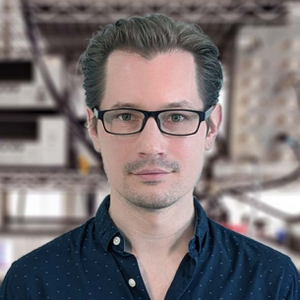
Dr Ivan Verzhbitskiy
Senior Scientist at A*STAR - Agency for Science, Technology and ResearchDr. Ivan Verzhbitskiy received his B.Sc. and M.Sc. degrees in Physics from St. Petersburg State University and completed his Ph.D. at the University of Angers (CNRS, France) in 2011. He then held a postdoctoral associate position at the Free University of Berlin, where he studied the electronic and optical properties of graphene, carbon nanotubes, and graphene nanoribbons. In 2013, he moved to the National University of Singapore as a Senior Research Fellow and later joined the Institute of Materials Research and Engineering (A*STAR) in Singapore. His main research interests focus on condensed matter physics, particularly quantum phenomena and the electronic signatures of many-body interactions in van der Waals materials.
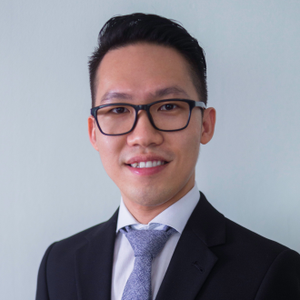
Dr Calvin Wong
Senior Scientist at A*STAR - Agency for Science, Technology and ResearchCalvin Pei Yu Wong is Senior Scientist and Deputy Head of the Quantum Technologies for Engineering department at the Institute of Materials Research and Engineering (IMRE), Agency of Science, Technology and Research (A*STAR), Singapore where he is pursuing research in the fabrication, characterization, and electrical measurements of 2D material and silicon quantum devices. He is also Deputy Head of the Quantum Engineering Program of the National Quantum Office, Singapore. He obtained his PhD in 2018 from the National University of Singapore.
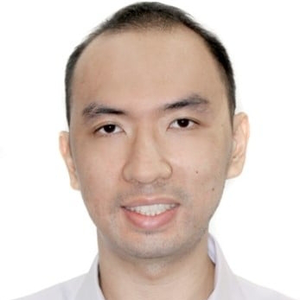
Dr Zi Cheng Wong
Scientist at A*STAR - Agency for Science, Technology and ResearchZi Cheng is a Scientist in the Materials Science and Chemistry Department of the Institute of High Performance Computing (IHPC), where his current work is largely focused on developing software and quantum algorithms for chemistry-related applications. He obtained a BSc. (Honours) in Chemistry with a second major in Mathematics, and a PhD. focusing on Computational Chemistry at the National University of Singapore. Before joining IHPC, he worked on modelling various molecular photophysical processes and simulating the vibronic coupling in molecules using density functional theory and GW methods. Outside of work, he likes to play badminton and jog (slowly).
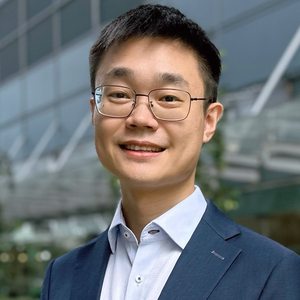
Dr Di Zhu
Assistant Professor at Centre for Quantum Technologies, National University of SingaporeDi Zhu received his B.Eng. from Nanyang Technological University and Ph.D. from Massachusetts Institute of Technology. After graduation, he spent two years at Harvard University as a postdoctoral fellow. In 2021, he returned to Singapore and worked as a research scientist at the Institute of Materials Research and Engineering (IMRE), A*STAR. In 2023, he joined the National University of Singapore as a Presidential Young Professor. He is also a Fellow of Centre for Quantum Technologies (CQT) and holds a joint appointment at Q.InC., A*STAR. He was a recipient of the National Research Foundation (NRF) Fellowship, Harvard Quantum Initiative (HQI) Postdoctoral Fellowship, and MIT Jin-Au Kong Thesis Award. His current research interests include integrated quantum photonics, applied superconductivity, and nanoscale electromagnetics.